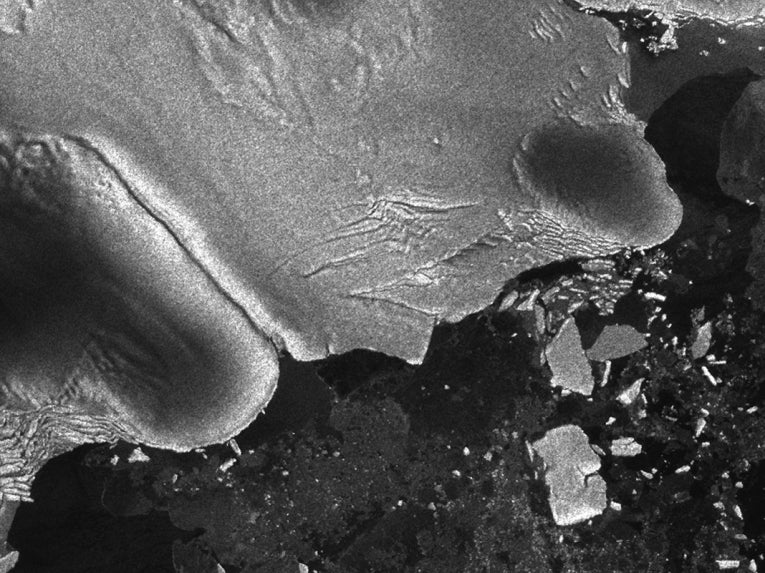Image Credit: European Space Agency/Envisat - Photo of Sulzberger Ice Shelf illustrate the calving event associated with the Japan earthquake and resulting tsunami that occurred on March 11, 2011.
The Japanese earthquake in March of this year was clearly a global event, but it's only now that some of the far-reaching effects of the earthquake and the Tohoku Tsunami are coming to light. Photographic evidence suggests that the tsunami resulted in icebergs being broken off the Sulzberger Ice Shelf in Antarctica over 8000 miles south of Japan.We know that the 9.0 earthquake shifted the main island of Japan 8 metres to the east. Now, images from the European Space Agency show that icebergs, some larger than Manhattan island, broke away from Antarctica just a few days after the quake.
Kelly Brunt of NASA's Goddard Space Flight Centre in Maryland, Emile Okal from the Northwestern University and Douglas MacAyeal from the University of Chicago reported on the findings in the Journal of Glaciology.
The scientists believe that the icebergs resulted from reverberations of the Tohoku tsunami battering the Antarctican ice shelf, despite having to travel almost 13,000 kilometres across the planet. The tsunami, when hitting the ice shelf, would have only been 30 centimetres high, yet this was enough to trigger the formation of a number of huge icebergs about 18 hours after the earthquake struck.When you consider that there had been no major changes to this part of the ice shelf in nearly 50 years, then the tsunami becomes the most obvious cause for the 50 square miles of ice that broke away from the shelf.
Immediately after the earthquake, the team focussed in on areas of ice shelf on the continent they knew to be at risk of fracture.
"In the past we've had calving events where we've looked for the source," commented Brunt, "We knew right away that this was one of the biggest events in recent history - we knew there would be enough swell. And this time we had a source."
This new evidence points to the possibility that earthquakes and resulting tsunamis could be a cause of icebergs and changes to the ice sheet on the fringes of Antarctica.
"This is an example not only of the way in which events are connected across great ranges of oceanic distance, but also of how events in one kind of earth system, i.e., the tectonic plate system, can connect with another kind of seemingly unrelated event: the calving of icebergs from Antarctica's ice sheet," concluded MacAyeal.
Video Credit: NASA/Goddard - Tohoku Tsunami Separates Ice from Antarctica. Nearly 50 square miles of ice broke off the Sulzberger Ice Shelf on the coast of Antarctica, resulting from waves generated by the Tohoku earthquake and tsunami that struck Japan in March 2011.










